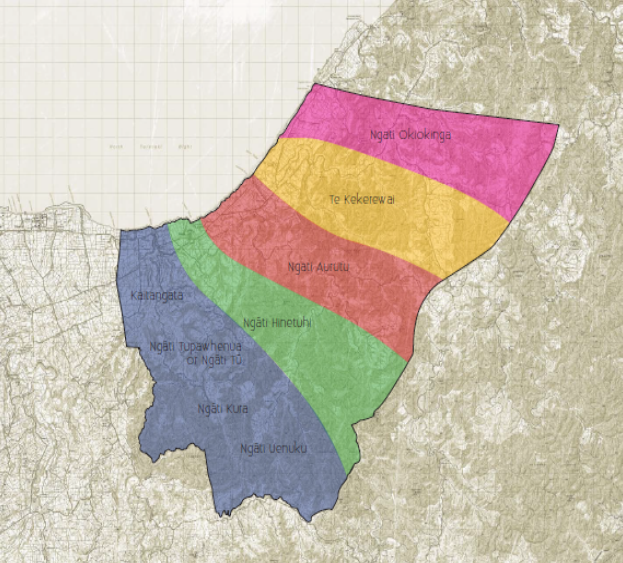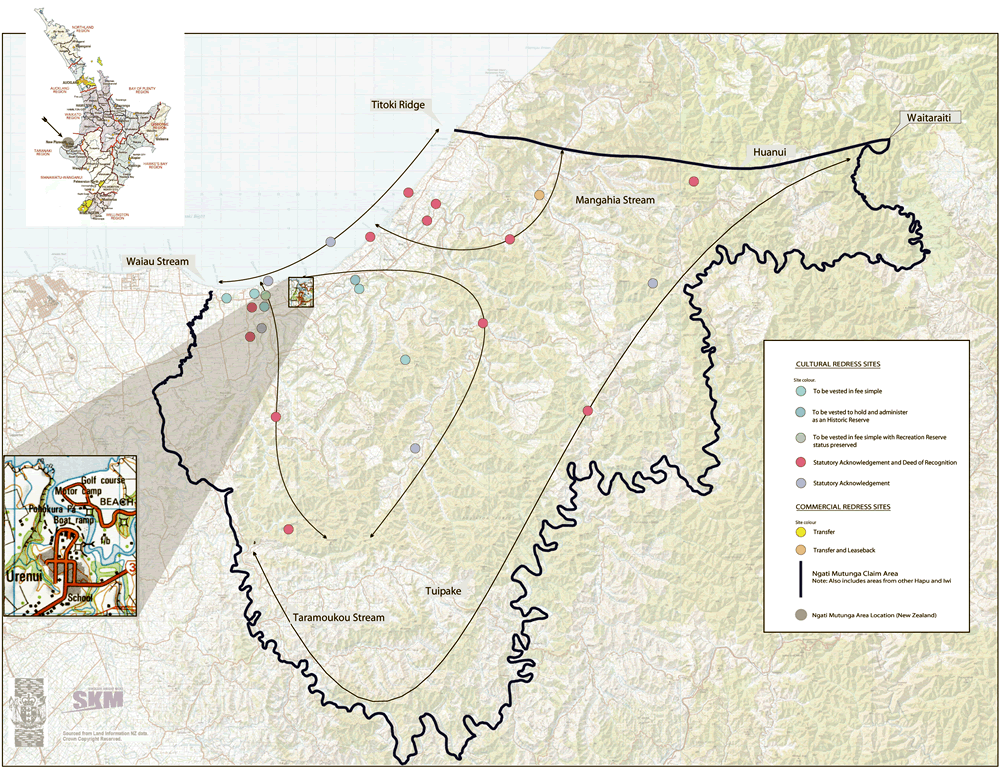NGĀTI MUTUNGA
Ngāti Mutunga descends from a number of ancestors who lived in the area occupied today by ngā uri o ngā tūpuna o Ngāti Mutunga. These ancestors include Tokauri, Tokatea, Mihirau, Heruika, Pūrakino, Rakaupounamu, Uenuku (son of Ruawahia), Hineweo, Hineno, Te Hihiotū, Kahukura and Mutunga.
Ngāti Mutunga also descends from ancestors who arrived on the Tokomaru, Tahatuna and Ōkoki waka such as Taitaawaro, Manaia and Ngānganarūrū. Over generations, the descendants of these tūpuna inter-married and became generally known as Ngāti Mutunga.
It is difficult to determine how many Ngāti Mutunga people there are. Our Taranaki rohe was once densely populated with many kāinga and pā. A number of factors such as warfare and migration, loss of land through wrongful Crown confiscation, and urban migration led to a decline in the population identifying as Ngāti Mutunga during the nineteenth and twentieth centuries.
Today our sole remaining marae is located in Urenui, a small seaside village located approximately 32 km north of New Plymouth and 20 km north of Waitara.
Like most Iwi, Ngāti Mutunga now has members spread far and wide. The main concentrations of Ngāti Mutunga populations are located within Taranaki, Christchurch and Wellington. The majority of Ngāti Mutunga descendants (approximately 73%) live outside Taranaki.
NGĀ HAPŪ ME ŌNA PĀRANGA (OUR HAPŪ)
Ngāti Mutunga was an autonomous, independent and self-governing confederation of hapū who occupied strategic areas along the coast and inland valleys.
These hapū included:

Ngāti Okiokinga
(descendants of Okiokinga) who occupied the Waiiti area
Te Kekerewai
who occupied the wider Mimi area
Ngāti Aurutu
(descendants of Aurutu) who occupied Ōkoki area
Ngāti Hinetuhi
(descendants of Te Hihiotu) who occupied the wider Urenui area
Kaitangata
(descendants of Tukaweriri, Hineweo and Te Ito)
Ngāti Kura
(descendants of Hineno)
Ngāti Uenuku
(descendants of Uenuku son of Ruawahia)
Ngāti Tupawhenua or Ngāti Tū
(descendants of Uenuku son of Ruawahia) who occupied the wider Onaero area
TRIBAL AREA
Mai Titoki ki Te Rau o Te Huia
From Titoki to Te Rau o Te Huia
The above pepeha relates to the northernmost and southernmost coastal pā of Ngāti Mutunga.
Our area of interest extended beyond these two pā as described below:
- The traditional rohe of Ngāti Mutunga is indelibly etched into both physical and historical landscapes. The Titoki ridge rises from the marine shelf in the northwest and signals our coastal interface with Ngāti Tama.
- From here, the Titoki stream outlines the extremities of tüpuna mana as far north as the Mangahia Stream from which an easterly direction is struck to Huanui, then northeast to Waitara-iti.
- The rohe then finds a natural eastern definition in the Waitara River as the river flows southward to the Pouiatoa precinct. From here the border extends further south and then northwest along the Waitara River to a point where the river connects with the Taramouku Stream.
- The confines of manawhenua are then traced in a northerly direction skirting slightly west of the Poukekewa, Poutotara and Pukemai streams. The Mangahewa Stream then provides an outline for the duration of the course to the coast.
- The old settlement in the district of Te Rau o te Huia was bounded by the Waiau River and its remains mark the area of Ngāti Mutunga’s traditional southern boundary.
- The area of the Ngāti Mutunga rohe described above is approximately 63,200 hectares (156,000 acres) according to a digital map calculation done in 2003.
A map of the Marine and Coastal area claimed by Ngati Mutunga under the Marine and Coastal area (Takutai Moana) Act 2011.
